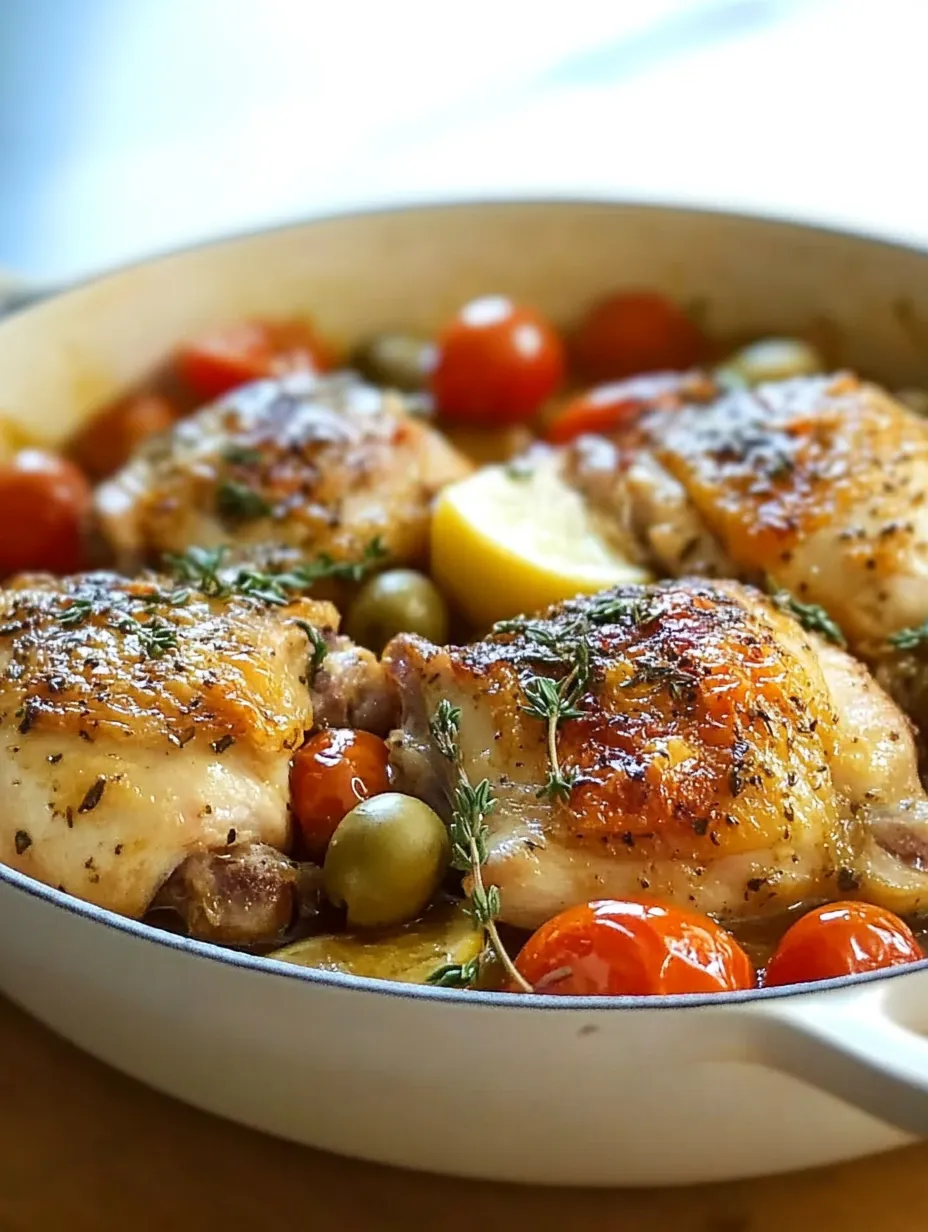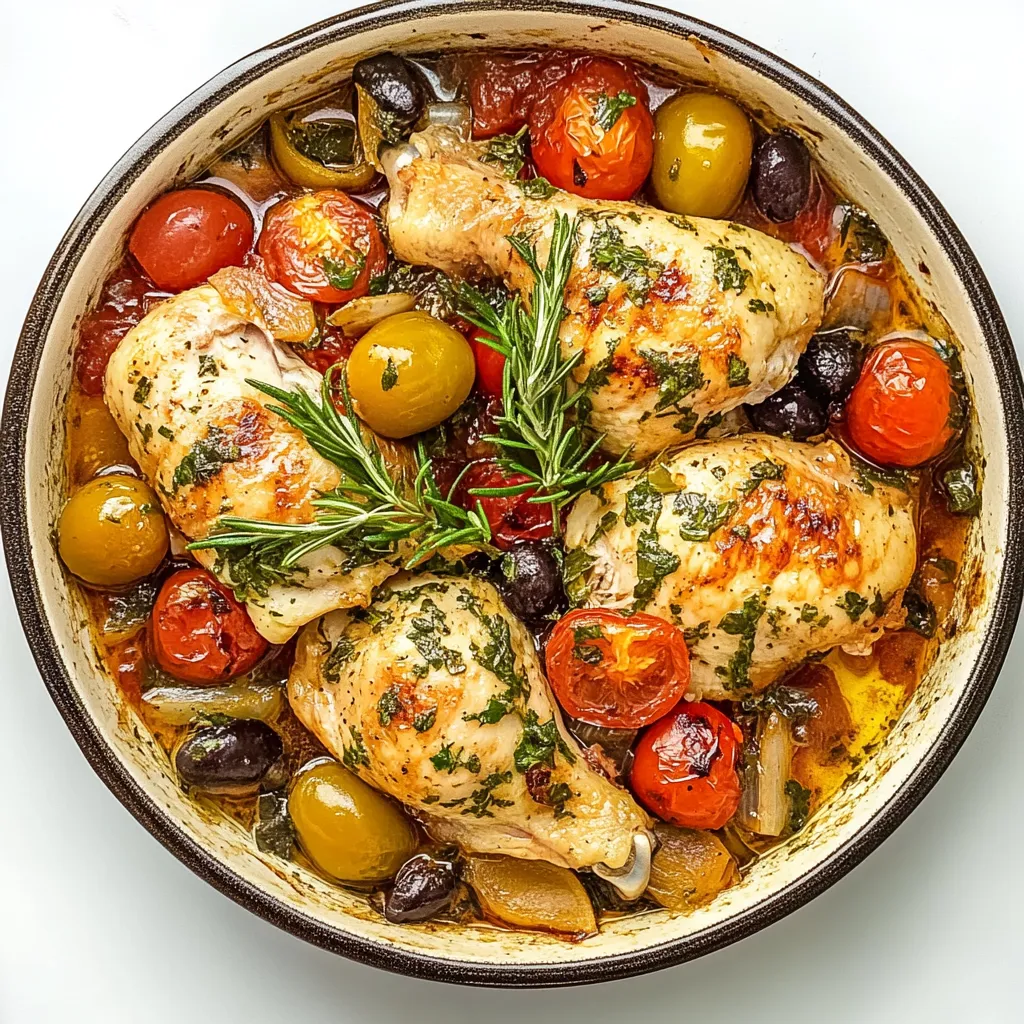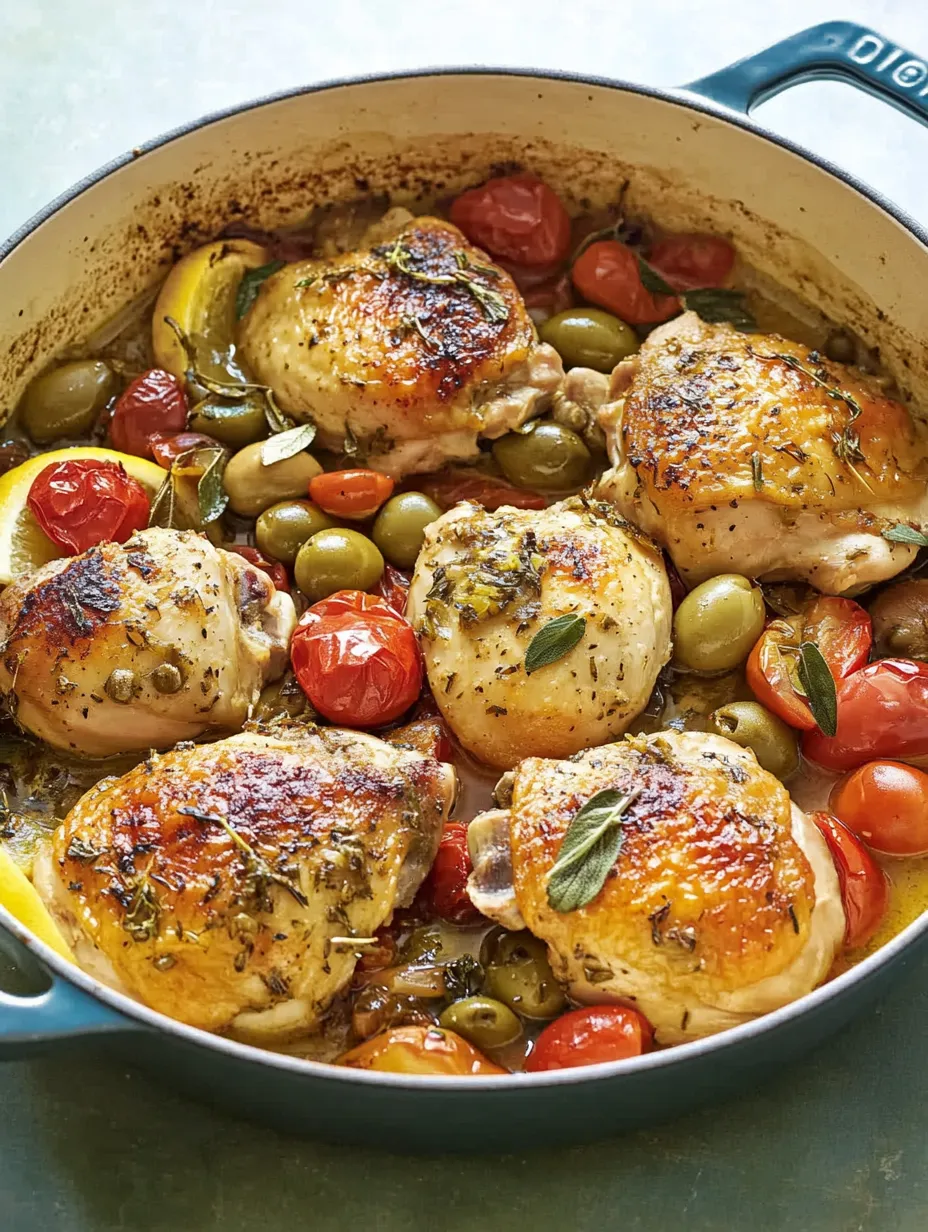 Pin it
Pin it
When Chicken Provençal starts bubbling away in your kitchen, you'll feel like you've been whisked away to sunny southern France. After trying countless versions over the years, I've found that the real secret isn't just what goes in the pot, but how each ingredient works together to create that authentic Provençal flavor. What starts as ordinary chicken thighs turns into something amazing when you brown them just right and let them slowly braise to perfection.
I made this for a dinner party last weekend and everyone went quiet after their first bite. Then they all wanted to know how I made it. The trick? Don't rush, especially when you're browning the chicken at the start.
Key Ingredients and Shopping Advice
- Chicken Thighs: Go for pieces with the skin still on and similar sizes - they should look plump with a nice pink color
- Fresh Herbs: You can use dried Herbes de Provence, but nothing beats fresh thyme for that extra pop of flavor
- Olives: Try the bright green Castelvetrano type for their perfect mix of salty and buttery taste
 Pin it
Pin it
Setting Up For Success
Start by completely drying off your chicken thighs - this isn't optional if you want that gorgeous golden skin. Add plenty of salt and pepper since this first seasoning step sets up all the flavor that follows. Let them sit out for 15-20 minutes while you get everything else ready.
 Pin it
Pin it
Getting That Perfect Brown
Take your time heating your pan on medium-low - rushing leads to uneven cooking. Add your olive oil and wait until it just starts to shimmer. Put those chicken thighs in skin-side down and listen for that gentle sizzle sound. Don't touch them for at least 8-10 minutes. Being patient here pays off with amazing crispy skin and deep flavor.
Prepping Your Flavor Makers
While the chicken does its thing, get your aromatics ready. Cut your shallots into quarters but keep the root part intact so they don't fall apart during cooking. Leave those garlic cloves whole - they'll turn soft and sweet as they cook. Pick tomatoes that are fresh and firm; they'll slowly break down and make your sauce richer.
Slow Cooking Magic
After your chicken is nicely browned, flip each piece carefully - if they're sticking to the pan, they need more time. Drop your shallots, garlic, and tomatoes into the spaces between the chicken, not on top. Spread your olives and capers evenly throughout the pan. Tuck those lemon wedges in last to create little pockets of tangy flavor throughout.
Picking and Adding Your Wine
Use a dry white wine you'd happily drink - I usually go for something crisp like a French Chablis or Sancerre. Pour it around the chicken, not directly on top, to keep that skin crispy. You want the wine to come about halfway up the sides of the chicken to create just the right braising environment.
Impressive Table Presentation
Just bring the whole pan to the table when it's done - it looks so rustic and charming. The colors tell their own story: golden chicken, bright red tomatoes, purple-edged shallots, and green herbs make it look as good as it tastes. Put some crusty bread slices around the edge so everyone can soak up that amazing sauce.
The Story Behind The Dish
This dish captures everything wonderful about southern French cooking. Coming from sunny Provence, it showcases all the region's best features - olive groves, herb-covered hills, and Mediterranean flavors. Every family makes it slightly differently from village to village, but they all keep the heart and soul of what makes it special.
Drink Pairings and Serving Ideas
Though we cook with white wine, you've got options when serving. A nice rosé from Provence works beautifully, or try a lighter red like Côtes du Rhône. Whatever you pick should work with those herby notes without taking over the subtle flavors in the dish.
Changing With The Seasons
- Summer: Go for the juiciest local tomatoes and just-picked herbs
- Fall: Throw in some mushrooms for a deeper flavor
- Winter: Double up on garlic and herbs for extra warmth
- Spring: Serve with small new potatoes on the side
Choosing The Right Cookware
The right pan makes all the difference. You need something heavy with an oven-safe handle for great heat control during searing. Cast iron works wonders and gets better every time you use it, while enameled Dutch ovens hold heat perfectly and clean up easily. Make sure your pan has enough room for everything - cramming ingredients leads to steaming instead of proper braising.
Making The Most Of Extras
 Pin it
Pin it
If you're lucky enough to have some left over, it'll taste even better tomorrow. Keep the chicken and sauce apart from any sides you served. When you're ready to eat again, put the chicken skin-side up in a covered dish with a splash of white wine or chicken stock. Warm it gently in a 325°F oven for about 15-20 minutes, just until it's heated through.
Planning Ahead For Busy Days
This dish fits perfectly into a busy schedule. Get everything ready the day before and store ingredients separately. Most of the cooking time doesn't need you hovering over the stove, so you can handle side dishes or other things while the oven does the hard work. Always make extra when you can - leftovers make amazing sandwiches or salad toppings.
Other Ways To Serve It
- Creamy Polenta: It soaks up every bit of that yummy sauce
- Roasted Fingerling Potatoes: With a sprinkle of herbs
- Simple Butter Lettuce Salad: Dressed with light vinaigrette
- Steamed Green Beans: Mixed with garlic and sliced almonds
Closing Thoughts
What makes Chicken Provençal so special is how straightforward yet respectful it is of good ingredients. After making it countless times in my kitchen, I've learned that success comes from really understanding how each part builds flavor. Watching simple ingredients slowly transform into something so aromatic and cohesive really shows you what French country cooking is all about.
Frequently Asked Questions
- → Can I swap thighs for breasts?
- Thighs handle braising better, but breasts work if cooked less time.
- → What’s a white wine alternative?
- Mix chicken broth with a splash of white vinegar for a similar kick.
- → What’s in Herbes de Provence?
- A mix of savory herbs like thyme, lavender, oregano, rosemary, and more.
- → Is this good to make ahead?
- Totally! The flavors deepen overnight. Heat it gently before serving.
- → What’s the best pan for this?
- Go for a big oven-safe skillet or a Dutch oven for ease.
